Sense of Smell in Animals- Ants

Animals have an incredible sense of smell that helps them navigate their environment, find food, and identify friends or foes. The animal kingdom is full of fascinating examples of how different species use their sense of smell to survive and thrive. It is time to dwell deeper in to sense of smell in ants.
What is the hierarchy in an ant colony?
The hierarchy in an ant colony is organized with the queen at the top. She is the only one who lays eggs. Below the queen are the worker ants, who find food, take care of the eggs and larvae, and keep the nest clean. Soldier ants are also part of the hierarchy; their job is to protect the colony from threats. Each ant has a specific role that helps the whole colony survive and thrive.
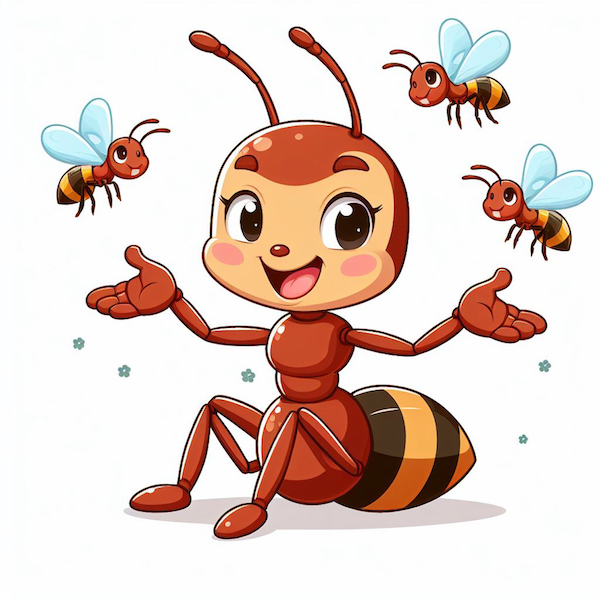
How long do ants live?
The lifespan of ants can vary depending on their role in the colony. Worker ants usually live for a few months to a year. Soldier ants can live a bit longer. The queen ant, however, can live for several years, sometimes up to 15 years or more, as she continuously lays eggs.
What do ants eat?
Ants eat a variety of foods including plants, seeds, nectar, and other insects. Different types of ants may prefer different kinds of food. For example, some ants like sugary substances, while others might go for protein-rich foods like dead insects.
Ants recognizing their friends and finding food using smell
One of the most remarkable examples of the sense of smell in animals is found in ants. These tiny insects heavily rely on their olfactory senses to communicate and organize their complex social structures. Ants use pheromones, which are chemical substances they produce, to leave scent trails that help them find their way back to the nest or lead others to a food source.
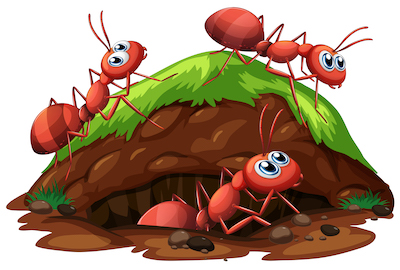
How do ants find food?
Did you know, ants have an extraordinary ability to detect food sources from a distance. Ants find food by exploring their surroundings. They use their antennae to detect smells and follow pheromone trails left by other ants. When a worker ant finds food, it leaves a pheromone trail back to the colony so other ants can find the food source too.
How do ants carry food?
Ants carry food using their strong jaws. They can lift and carry items many times their own body weight. Some ants work together to carry larger pieces of food back to their colony. This teamwork helps them bring back enough food to share with everyone in the colony.

What do ants do with food?
Ants bring the food they find back to their colony. The food is shared among all the colony members, including the queen, workers, and larvae (baby ants). Worker ants often break down the food into smaller pieces to make it easier to carry and eat. Some ants also store food in special chambers within their nest to ensure they have enough supplies during times when food is scarce.
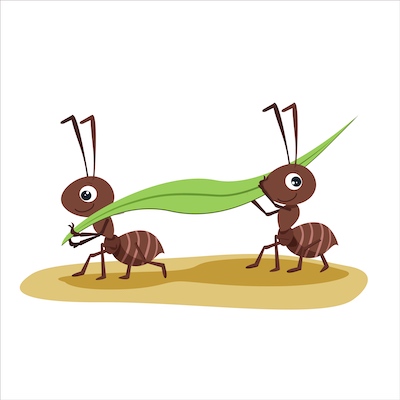
Do ants move in a line?
Yes, they often move in a line. They do this by following pheromone trails left by other ants. When a worker ant finds food, it leaves a trail of pheromones back to the colony. Other ants follow this scent trail to the food source, creating a line as they march to and from the food.
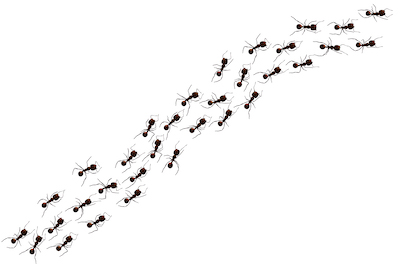
How do ants recognize a friend ant?
When an ant encounters another ant, it again uses its sense of smell to determine whether the other ant belongs to the same colony. Each ant colony has a unique scent, which comes from chemicals on their bodies called pheromones. When ants meet, they use their antennae to detect these pheromones. If the scent matches their own colony’s scent, they recognize the ant as a friend. If the scent is different, they know it is an intruder from another colony.
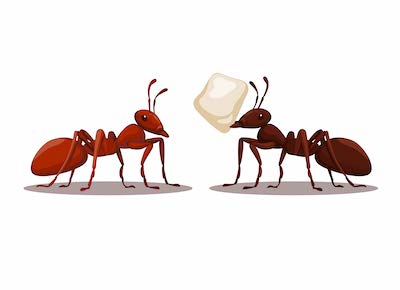
Click here for free worksheets on animals by workybooks!
This text is useful for kids to learn about ants because it highlights how ants’ different traits help them survive, find mates, and reproduce. Understanding these concepts can help students see the importance of variation in nature and how it contributes to the survival of species. The vocabulary words and questions encourage active learning and comprehension, making the subject engaging and educational.
Informational Text 1: Ants and Pheromones
Ants are fascinating insects that use pheromones to communicate. When an ant finds food, it releases a pheromone trail back to the nest. Other ants smell this trail and follow it to the food. This teamwork helps the whole colony find and collect food efficiently. If an ant encounters danger, it can release a different pheromone to warn others to stay away.
Multiple Choice Questions
- What do ants use pheromones for?
a) To change color
b) To find food
c) To fly
d) To make sounds - How do other ants know where the food is?
a) By following a pheromone trail
b) By seeing the food
c) By making noise
d) By touching the food - What happens if an ant encounters danger?
a) It eats the danger
b) It builds a nest
c) It releases a warning pheromone
d) It changes color - Why do ants work together using pheromones?
a) To fly faster
b) To find food efficiently
c) To sleep
d) To change color
Answer:
1. b) To find food
2. a) By following a pheromone trail
3. c) It releases a warning pheromone
4. b) To find food efficiently
Free Response Questions
- How do ants use pheromones to find food?
Answer: Ants use pheromones to create a trail from the food back to the nest. Other ants smell the trail and follow it to the food. - What message might an ant send with a warning pheromone?
Answer: An ant might send a message with a warning pheromone to tell other ants to stay away from danger.
Activity: Vocabulary Words
- Pheromones: Chemical substances produced and released by animals, especially insects, affecting the behavior or physiology of others of the same species.
- Antennae: Sensory appendages on the heads of insects and some other arthropods used for smelling and touching.
- Colony: A group of animals, such as ants, living together and cooperating for survival.
- Chemical trails: Paths marked by pheromones that guide other members of the species to a specific location, like a food source.
- Recognize: To identify or know someone or something from having encountered them before.
Fill in the Blank Activity
Description: Use the vocabulary words to complete the sentences about how ants use their sense of smell.
- Their __________ help them detect scents and navigate their environment.
- Each ant __________ has a unique scent profile that distinguishes it from others.
- Foraging ants leave __________ to lead others to food.
- Ants can __________ their colony members by detecting familiar scents.
- Ants use __________ to communicate and coordinate with each other
Answers:
- Antennae
- Pheromones
- Chemical trails
- Recognize
- Colony



